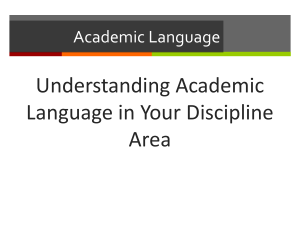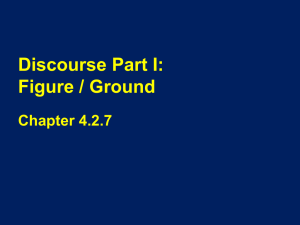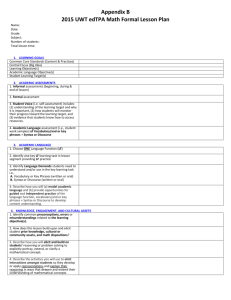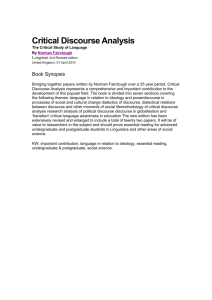edTPA VOCABULARY for language
advertisement
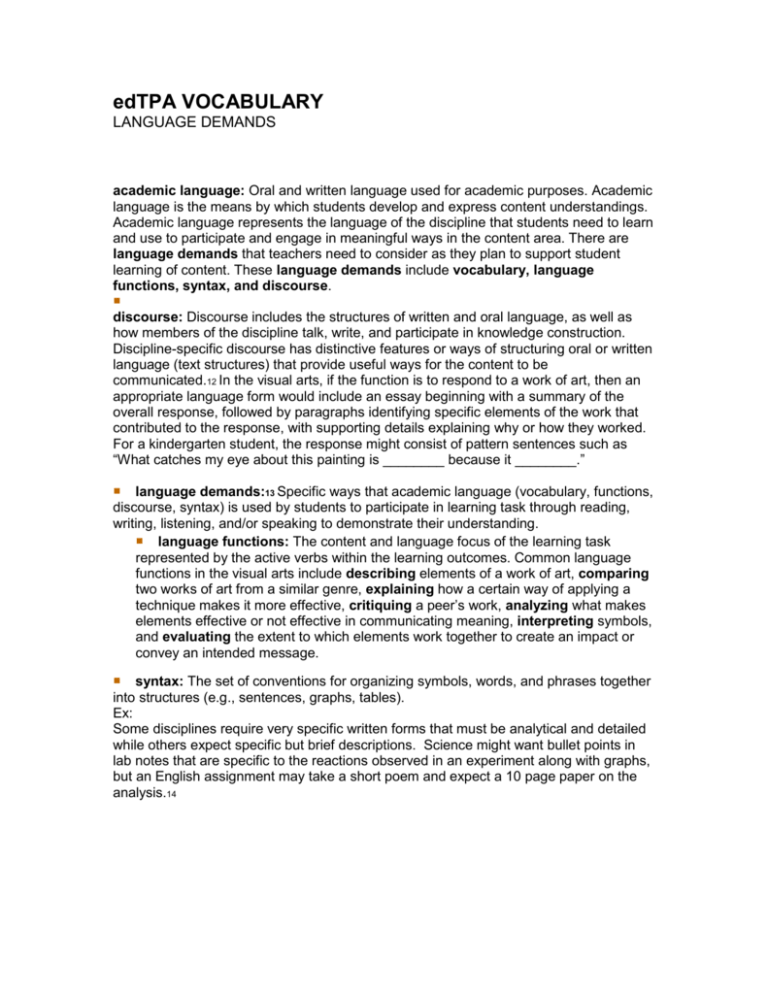
edTPA VOCABULARY LANGUAGE DEMANDS academic language: Oral and written language used for academic purposes. Academic language is the means by which students develop and express content understandings. Academic language represents the language of the discipline that students need to learn and use to participate and engage in meaningful ways in the content area. There are language demands that teachers need to consider as they plan to support student learning of content. These language demands include vocabulary, language functions, syntax, and discourse. discourse: Discourse includes the structures of written and oral language, as well as how members of the discipline talk, write, and participate in knowledge construction. Discipline-specific discourse has distinctive features or ways of structuring oral or written language (text structures) that provide useful ways for the content to be communicated.12 In the visual arts, if the function is to respond to a work of art, then an appropriate language form would include an essay beginning with a summary of the overall response, followed by paragraphs identifying specific elements of the work that contributed to the response, with supporting details explaining why or how they worked. For a kindergarten student, the response might consist of pattern sentences such as “What catches my eye about this painting is ________ because it ________.” language demands:13 Specific ways that academic language (vocabulary, functions, discourse, syntax) is used by students to participate in learning task through reading, writing, listening, and/or speaking to demonstrate their understanding. language functions: The content and language focus of the learning task represented by the active verbs within the learning outcomes. Common language functions in the visual arts include describing elements of a work of art, comparing two works of art from a similar genre, explaining how a certain way of applying a technique makes it more effective, critiquing a peer’s work, analyzing what makes elements effective or not effective in communicating meaning, interpreting symbols, and evaluating the extent to which elements work together to create an impact or convey an intended message. syntax: The set of conventions for organizing symbols, words, and phrases together into structures (e.g., sentences, graphs, tables). Ex: Some disciplines require very specific written forms that must be analytical and detailed while others expect specific but brief descriptions. Science might want bullet points in lab notes that are specific to the reactions observed in an experiment along with graphs, but an English assignment may take a short poem and expect a 10 page paper on the analysis.14



